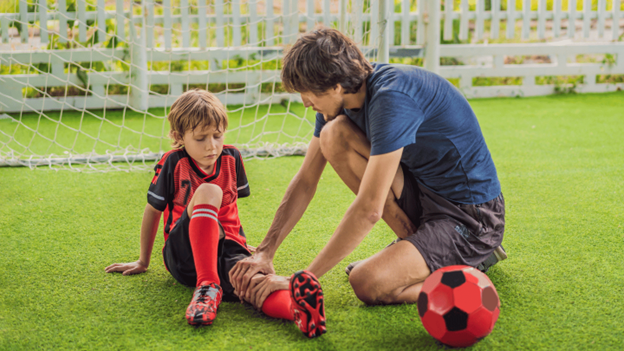
Acute fracture from a summer sports injury? Here's what to do next.
Summer sports are supposed to be fun, not scary. But every parent dreads that moment when their kid hits the ground hard and doesn't get back up right away. When your child goes down hard during a basketball game or takes a nasty fall while skateboarding, the last thing you want to hear is that they might have an acute fracture.
But knowing what to look for and how to respond can make all the difference in getting them the right care quickly.
An acute fracture isn't something you can "walk off" or treat with ice and rest. These injuries need immediate medical attention to heal properly and prevent long-term complications.
From recognizing the warning signs to getting proper treatment, here's everything you need to know about acute fractures from summer sports injuries.
What is an acute fracture?
An acute fracture is a break in a bone that happens suddenly from trauma or impact during physical activity, like when a player collides with another athlete or lands wrong after jumping.
Key characteristics of acute fractures:
- Range from tiny hairline cracks to complete breaks
- Can be "displaced" (pieces moved) or "non-displaced" (pieces aligned)
- Causes immediate pain and loss of function
- Most common in the wrist, ankle, fingers, and collarbone
Acute fracture warning signs to watch for.
Your child might not be able to put weight on their leg, move their arm normally, or use the injured area at all. Some fractures are obvious. You might hear the bone break or see a deformity. Others are harder to detect due to swelling.
In short, don't hope it's "just a sprain." Any suspected fracture needs medical evaluation, but the good news is most heal well in children with proper treatment.
Summer sports that frequently cause fractures.
Some summer sports are just riskier for broken bones because of all the falling and crashing into things.
- Basketball tops the list, with players frequently injuring fingers and hands when the ball hits them at awkward angles. Ankle fractures occur from landing on another player's foot, while wrist fractures happen when players try to break their fall.
- Skateboarding and rollerblading cause numerous wrist, arm, and ankle fractures. When riders lose balance, the natural instinct is to put their hands out to break the fall, leading to wrist and forearm fractures.
- Baseball and softball create unique fracture patterns. Batters sometimes fracture hands or fingers when hit by pitches, and fielders can break fingers when balls take unexpected bounces.
- Soccer might seem lower-risk, but ankle fractures are common from awkward landings or getting cleated by another player. Goalkeepers face extra risks to their hands and wrists from diving saves.
- Cycling and BMX accidents often result in collarbone fractures when riders go over the handlebars, as well as wrist fractures from trying to break falls.
Even seemingly low-impact activities like playground games, trampolines, or backyard football can result in acute fractures.
Most of these breaks happen when children hit something hard, land awkwardly, or crash into each other.
What to do immediately after a suspected fracture.
If you think your child might have broken something, what you do next really matters.
- Stop all activity immediately. Don't let your child try to "walk it off" or continue playing. Get them off the field/court and keep them as still as possible.
- Don't move the injured area. Resist the urge to test the range of motion. Movement can make it worse and intensify pain.
- Apply ice safely. Use a cold pack wrapped in a thin towel for 15-20 minutes at a time to reduce swelling and numb pain. Never put ice directly on skin.
- Support and stabilize the injury. If available, create a simple splint using magazines or rigid materials to keep the injured area from moving.
- Check circulation. Look at fingers or toes beyond the injury. They should be pink, warm, and responsive to touch. Blue, cold, or numb extremities need immediate emergency care.
- Watch for warning signs requiring emergency care: Severe uncontrolled pain, visible bone protruding through skin, complete inability to move the injured area, or signs of poor circulation.
- Get a medical evaluation promptly. Even if the injury seems minor, suspected fractures need professional assessment and X-rays to determine severity.
- Provide comfort and reassurance. Stay calm and explain that doctors can fix broken bones. Your confidence helps them stay calmer, too.
The key is moving quickly but carefully. Don't delay medical evaluation hoping the injury will improve on its own. Proper diagnosis and treatment are key to good healing.
If your child has broken a bone during summer sports, CityMD can help right away. We've got X-ray machines at our locations and doctors who know how to handle fractures, so you can get answers and treatment fast.
No appointment needed. We're here to help when injuries happen.

We’re ready to care for you.
Visit any CityMD urgent care location in your community today for an evaluation with one of our expert providers.